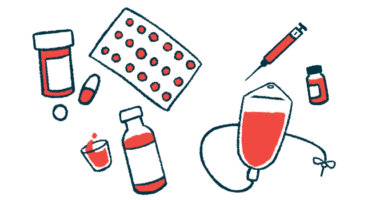Study: Potential biomarkers of AAV-associated kidney disease identified
Patients have greater activity among 6 genes linked to NETs

ANCA-associated vasculitis (AAV) patients with kidney disease have significantly more activity among six genes associated with forming neutrophil extracellular traps (NETs), a type of antimicrobial web produced by immune neutrophil cells, a study shows.
The activity levels of these genes increases with kidney function decline and is tied to a range of immune cells and pathways that may contribute to further kidney damage. Their activity let the researchers accurately discriminate between AAV patients with kidney involvement and healthy people, further highlighting their potential as biomarkers of kidney disease with AAV.
The study, “Identification and validation of immune-associated NETosis subtypes and biomarkers in anti-neutrophil cytoplasmic antibody associated glomerulonephritis,” was published in Frontiers in Immunology.
AAV is an autoimmune disease marked by inflammation and injury to small blood vessels, most commonly in the kidneys.
Kidney involvement in AAV is typically characterized by glomerulonephritis, or inflammation and damage to the kidneys’ filtering units (glomeruli), that can affect normal kidney function and possibly lead to kidney failure.
The formation of NETs in AAV
Damaging AAV-associated inflammation is caused by the overactivation of neutrophils, the immune cells targeted by the self-reactive antibodies that mark the disease. Neutrophils quickly respond to injury or infection and can form antimicrobial webs called NETs that trap and kill harmful invaders.
NETs are excessively produced in AAV, research indicates, and they promote inflammation and tissue damage. For this reason, certain NET dynamics could serve as AAV disease biomarkers.
NETosis is the process by which contents from the inside of a cell are released to form NETs. This is a key process for neutrophils’ microbial defense system, but it’s also implicated in the inflammation and tissue damage that mark some autoimmune diseases.
Whether NETosis could be involved in driving AAV-associated glomerulonephritis (ANCA-GN) is unclear, leading researchers in China to conduct bioinformatic analyses of gene activity data from ANCA-GN patients and healthy people from several databases.
Genes associated with ANCA-GN
They first looked for groups of genes associated with clinical traits of ANCA-GN and that were intersected with NET-associated genes to identify those whose activity was significantly altered with ANCA-GN.
From this analysis, a group of 18 genes emerged, many of which were involved in inflammatory signaling pathways. A NETosisScore model was developed to categorize patients based on the activity of these genes.
The model was able to distinguish ANCA-GN patients from healthy people with very high accuracy, indicating ANCA-GN patients “may have different patterns of NETosis [activity],” the researchers wrote.
Moreover, when ANCA-GN patients were categorized as either high or low risk based on their scores, various immune differences were apparent between the groups. High-risk ANCA-GN patients exhibited a greater enrichment of immune pathways and immune cell infiltration relative to the low-risk group, which showed an enrichment in metabolic pathways.
From the analyses, the researchers believe dysfunction of certain immune cell populations, namely regulatory T-cells and macrophages, could be associated with NETosis and contribute to ANCA-GN disease progression.
“However, the precise mechanisms underlying these processes require further experimental validation,” they wrote.
Additional analyses using artificial intelligence models revealed six key NETosis-associated genes that couldo serve as ANCA-GN biomarkers — CYBB, ITGB2, ITGAM, TLR2, TLR7, and LILRB2.
These genes correlated with various immune pathways and cells. In particular, relationships were observed between some of the genes and toll-like receptor (TLR) signaling pathways, which are key immune pathways associated with AAV.
Again, these NETosis-associated genes were more strongly associated with macrophages than neutrophils, suggesting they “may act through macrophages in releasing NETs during the progression of ANCA-GN,” the researchers wrote.
The activity of all of the genes was significantly higher among ANCA-GN patients relative to healthy controls. This was true across three databases.
A model for predicting the risk of ANCA-GN based on all six genes was found to be highly accurate at discriminating patients from healthy people. Moreover, activity levels of these key NETosis-associated genes were associated with kidney function in ANCA-GN patients. As gene activity increased, kidney function declined and markers of kidney damage were elevated.
Taken together, the findings position these six NETosis-associated genes as “potential prognostic biomarkers” for ANCA-GN, with the ability to predict the degree of kidney damage, wrote the researchers, who cautioned that more animal and clinical molecular biology experiments are needed to verify their results.







